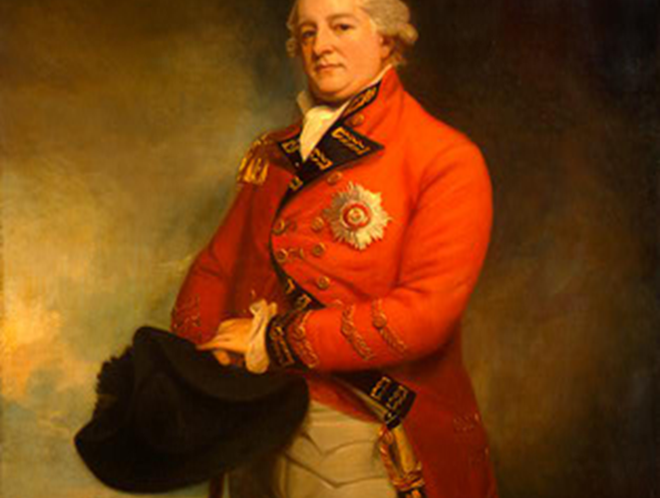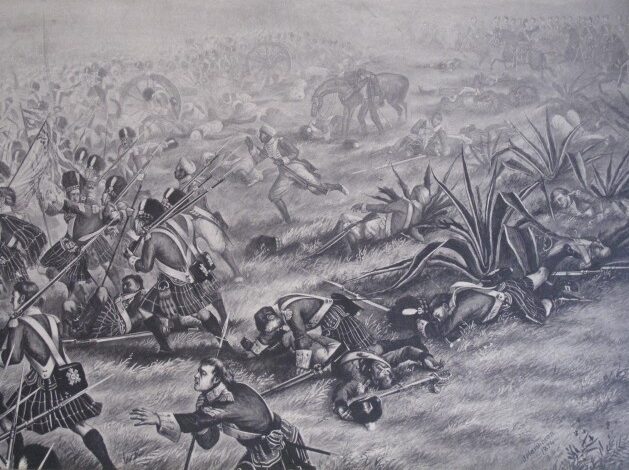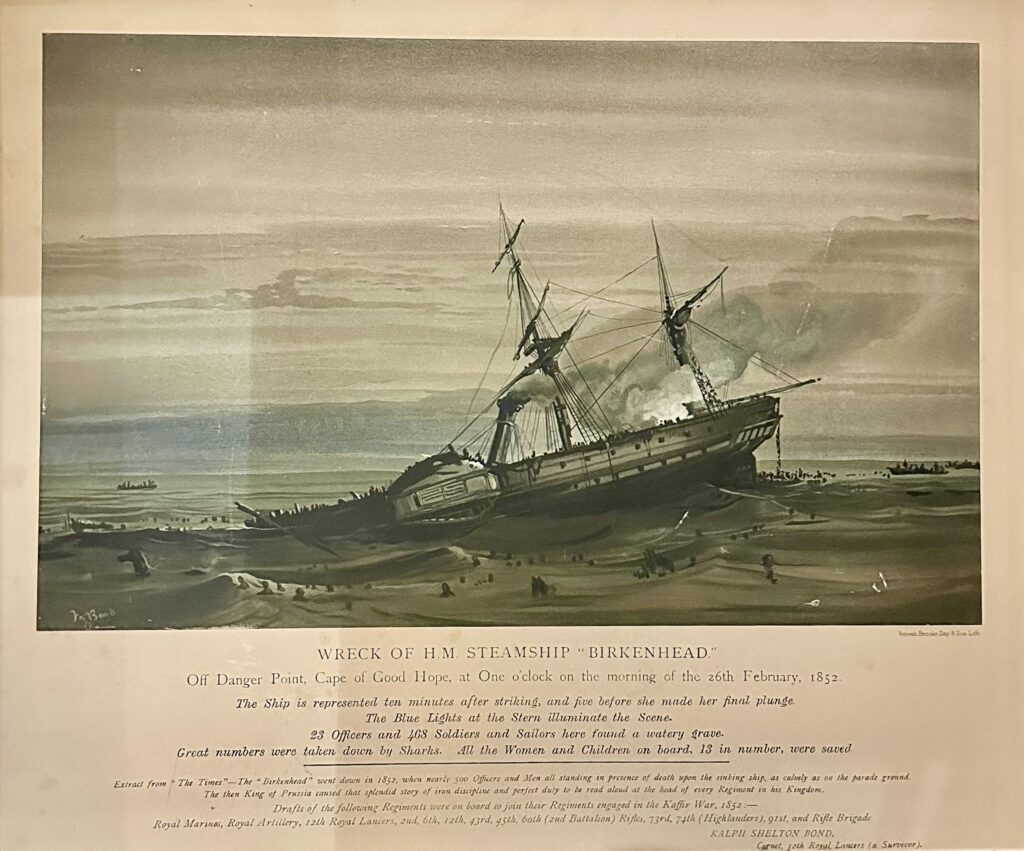HISTORY OF THE HIGHLAND LIGHT INFANTRY
The 74th Regiment of Foot
RAISING OF THE 74TH REGIMENT OF FOOT
Sir Archibald Campbell of Inverneill raised the 74th Highlanders in 1787 as one of the regiments raised to counter threats in India. It was a Campbell regiment raised in Argyll with headquarters in Glasgow, featuring eleven officers of that name among the originals, including the Colonel himself.
The new regiment had an establishment of over 900 men including 20 drummers, 2 fifers and 710 private soldiers. The uniform was full Highland garb of kilt and feathered bonnet, with tartan similar to the 42nd Regiment and white facings. The kilt was later discontinued in the East Indies as unsuited to the climate.
SIR ARCHIBALD CAMPBELL
Campbell was commissioned into the Royal Engineers and served in the Seven Years War, Siege of Quebec, raids on France and the West Indies. He became Chief Engineer of the British East India Company, making his fortune and later standing for Parliament. He sailed for America commanding the 71st Regiment of Foot (Fraser’s Highlanders) during the American Revolutionary War. Though captured, he later won battles at Savannah and Augusta, becoming Governor of Jamaica and Madras.
CAMPAIGNS
The 74th Highlanders almost immediately left for India, where they fought in the Third Mysore War (1789-92), participating in the capture of Bangalore (1791) and the siege, assault and capture of Seringapatam (1791-2). This was closely followed by the Second Polygar War (1800-05) and the Second Maratha War (1803-6) – the latter under Sir Arthur Wellesley, later the Duke of Wellington, fighting in the battles of Ahmednaggar (1803), Assaye (1803) and others. The 74th spent four years (1810-14) in the Peninsula fighting Napoleon’s armies and added eleven battle honours to the Regimental Colour. The Regiment moved back to India in 1854, remaining there for ten years and fighting during the Indian Mutiny (1857-59). The following two decades saw the 74th stationed in Britain, Ireland, the Mediterranean and Hong Kong. The Regiment returned to Britain by 1881 to be amalgamated with the 71st Regiment of Foot.
FEATURED BATTLE
Battle of Assaye 1803
Five thousand British troops under Sir Arthur Wellesley, later the Duke of Wellington, faced forty-two thousand Mahrattas at the Battle of Assaye (1803), alongside The 78th Highlanders, The 19th Light Dragoon and various battalions of Sepoys. Despite orders to avoid the fortified village of Assaye, the picquet commander led his men toward the enemy guns and cavalry. The 74th, following orders to support the picquets, found themselves exposed to artillery fire and repeated cavalry charges. In the face of annihilation, every officer present was killed or wounded except Quartermaster James Grant. This non-combatant, seeing his friends fall, joined the ranks and fought until the battle’s end. The regiment was reduced from 500 men to just 80 able to answer roll call. In one company of 50 men, 48 were killed. Despite catastrophic losses, the 74th held their position. Their refusal to break saved Wellesley’s right flank and the entire battle. Wellesley never forgot their sacrifice. Years later, when asked about his finest military moment, the Duke of Wellington replied simply: “Assaye.” He added nothing more. The 74th became “My Fighting Regiment”—a designation that honoured their extraordinary courage.
DID YOU KNOW?
Only Regiment with 3 Colours
During the battle of Assaye, every officer in the Regiment was killed and the remaining members of The 74th were led into battle by the Regimental Sergeant-Major. For this action and their exemplary service of 18 years in India, the East India Company award the Regiment the third or Assaye Colour – The Royal Highland Fusiliers, and now their successor battalion, The Royal Highland Fusiliers, 2nd Battalion The Royal Regiment of Scotland were the only British infantry regiment to carry a third Colour.

Regimental Colours.
"Women and Children First"
On 26th February 1852, when the HMS Birkenhead was rounding the Cape of Good Hope, it struck the rocks off Danger Point and began sinking within 20 minutes. The ship, which had set sail from Portsmouth to Algoa Bay, South Africa, carried around 650 crew, marines, soldiers, women, and children on board. With too few lifeboats, Colonel Seton of the 74th (HLI) and Captain Salmond (Royal Navy) worked to maintain order. Colonel Seton ordered his men to stand fast, ensuring all women and children get away safely. Due to the extraordinary discipline and bravery demonstrated by the soldiers, 193 people survived, including all women and children. However, Captain Salmond and Col Seton were among the non-survivors. Their leadership and sacrifice gave rise to the legendary ‘Birkenhead Drill’- the first record of ‘Women and Children First.’



